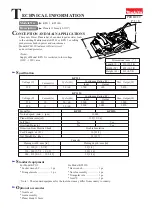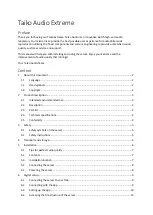
3. Signal Capacitive Coupling to Parallel Floating Circuits
Another characteristic of the open circuit signal is that it will capacitive couple to parallel floating circuits.
(See: “Bench Tracing a Wire Harness” pg. 24)
4. Travels to ALL Open Ends
In Fig. 1 we are injecting an open circuit signal into a
parallel circuit that has three wires. Two of those wires lead to
open switches and the other leads to the open/break. As you
can see the open circuit signal travels to all open ends. This
makes it necessary to isolate the problem circuit away from the
others.
5. Can only be present in a circuit when there is a resis-
tance greater than 100 ohms
(See: Open Circuit Signal vs Grounded Circuit Signal” pg. 22)
6. Has NO Polarity
The open circuit signal does not have a polarity therefore the
ECT receiver gives no direction indication as to a break in
the wire. You will need to logically reason the direction of the
break in the circuit and then continue to trace it.
7. 8 Volt amplitude and 4 kilo-Hertz signal
The 4 Kilo-Hertz signal of the open circuit signal can be de-
tected by the receiver. (See: “Locking the Sensitivity for Open
Circuits” pg. 14) You can also use the Power Probe III, or Power probe IV for open circuit signal detection by direct contact.
(See: “Verify an Open Circuit” pg. 23)
Problem circuit not
isolated
Signals are all
over the
place, because
the problem
circuit has not
been
isolated
Fig. 1
10
Signals are all
over the place,
because the
problem circuit
has not been
isolated
Problem circuit not isolated











































